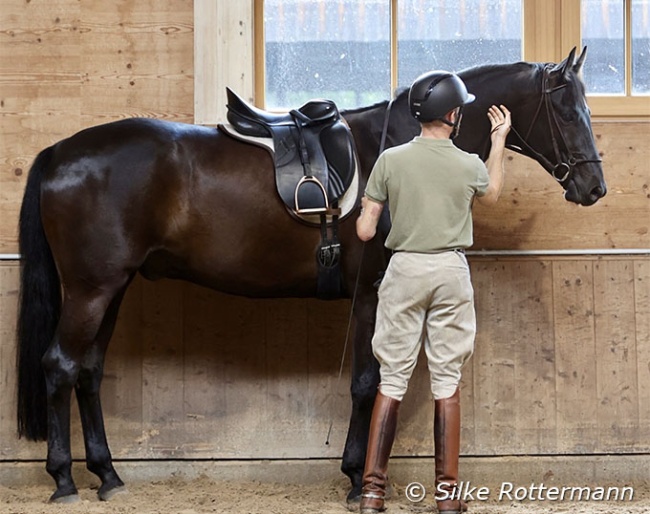
This article is a continuation of:
Fanti's Progress - Part IV: A Three-Day Training Stint with Anja Beran
and
Fanti's Progress - Part IV - Training with Beran: Days and Exercises to Remember
At the end of June 2024 Max Jaquerod went on a four-day training stint with German dressage trainer Anja Beran.
His horse Fantastico is a rather narrow, refined type of horse who compared to superior dressage horses with this ability by birth, does not own big natural push from behind. As a result he sometimes tends to go wide behind, with his right hind-leg carrying less. Generally Fanti could be quicker behind.
Therefore the goal was not to improve certain movements on the way the medium level, but to get new input how to increase Fanti’s strength, his ability to push and carry.
And while the single movements which were used to achieve this goal were well-known to horse and rider, the combination of them in the respective exercises were new. They were chosen for Fanti’s physical needs and to animate him to bring the right hind-leg more under his body and carry more weight with it.
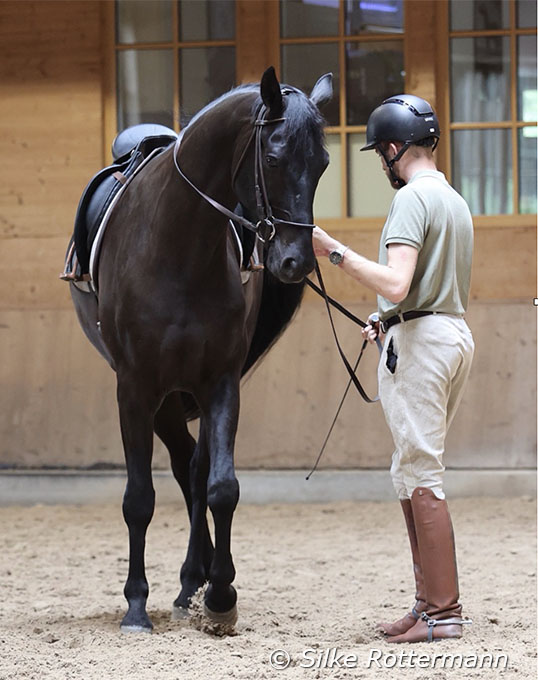
hand as a kind of mental and physical warm-up
for the mounted work that follows
Here are Max' words describing the training sessions:
Getting mentally ready
Anja’s teaching style and the whole atmosphere in her bright indoor arena were characterized by great calmness and studiosity.
At the beginning of each lesson I hand-walked my horse and then we started in hand by letting Fanti cross over behind on both leads. I admit warming my horse up in hand hasn’t yet played any part in my training at home, but apart from the physical effect this well-known movement has, it also got us mentally ready and in tune. The calmness of the exercise and the refined aids applied put us in the right state of mind to tackle the ridden part that followed.
In the following I describe a selection of exercises which I personally considered very valuable for my horse.
Renvers on a circle and on a figure of 8
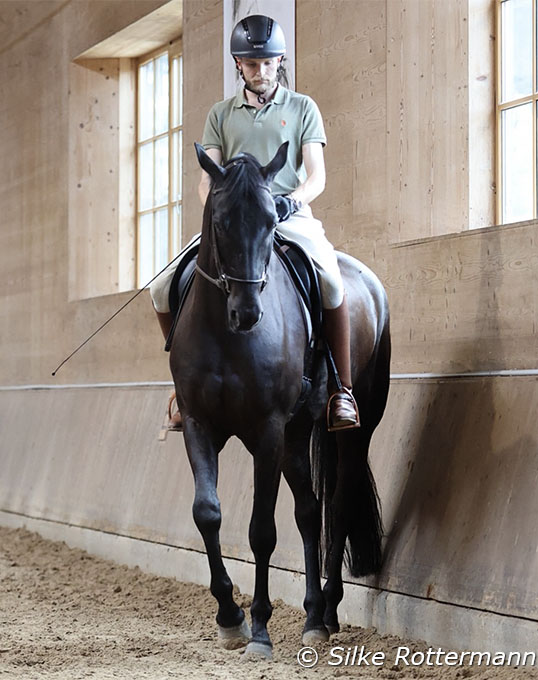
flexed and bend in the
direction he moves
Ridden on a circle, this lateral movement’s difficulty increases, but at the same time also its efficacy as the front-legs move on a smaller circle-line then the hind-legs. Because the hind-legs have to cover the bigger distance, this results in longer and quicker steps.
On the right lead renvers initiates Fanti to bring his (weaker) right hind-leg towards the centre of gravity. However, on the other lead I can well check if he steps forward or tries to evade with the leg to the outside.
Changing from one circle to the other in a figure of 8 requires a high degree of submission as the horse has to change from one flexion and bend to the other as smoothly as possible and without a loss of rhythm so he continues in the other direction.
Transitions from Canter to Trot in Travers Position on the Circle
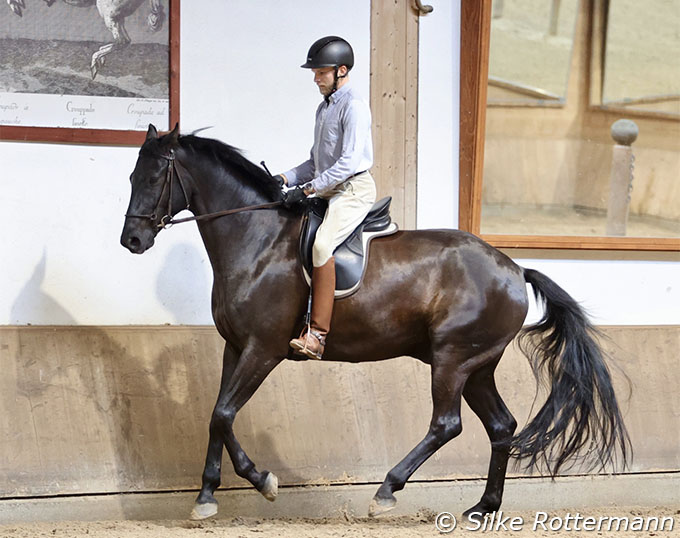
a push-off from the outside hind-leg
On the circle-line the right hind-leg reaches more forward and has to step more under. Because I push with my right leg into the bend of the circle, Fanti cannot evade to the outside with his right hind-leg. At the same time the more the right hind-leg takes weight and comes under, the more weight is taken off Fanti’s left shoulder.
The transition from canter in travers-position on a circle to trot in the same position was very demanding for my horse, over all at the beginning. It showed in him trying to slow down to transition to walk instead of trot. It is a transition which requires a high degree of body control from the horse and therefore a certain degree of balance.
Walk Half-Pass through the Diagonal with two Pirouettes
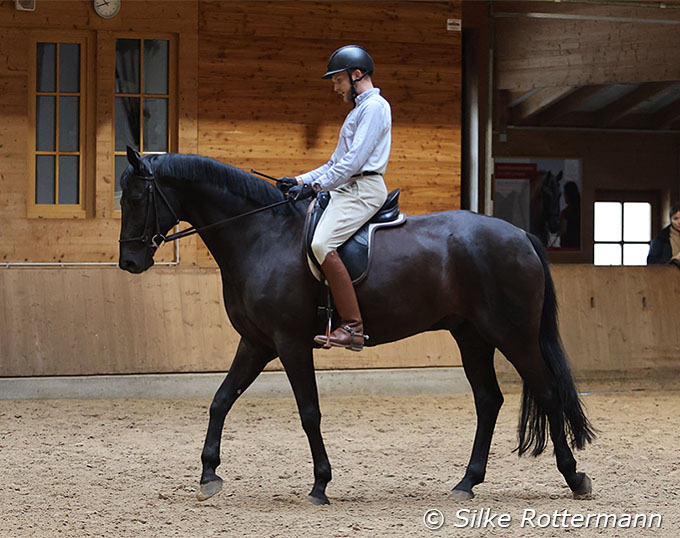
horse carry himself
A special kind of exercise was then the walk half-pass through an entire diagonal, interrupted by two pirouettes: One usual walk-pirouettes in which the horse moves the front-leg around the hindquarters and one reversed pirouette in which the hind-legs move around the forehand.
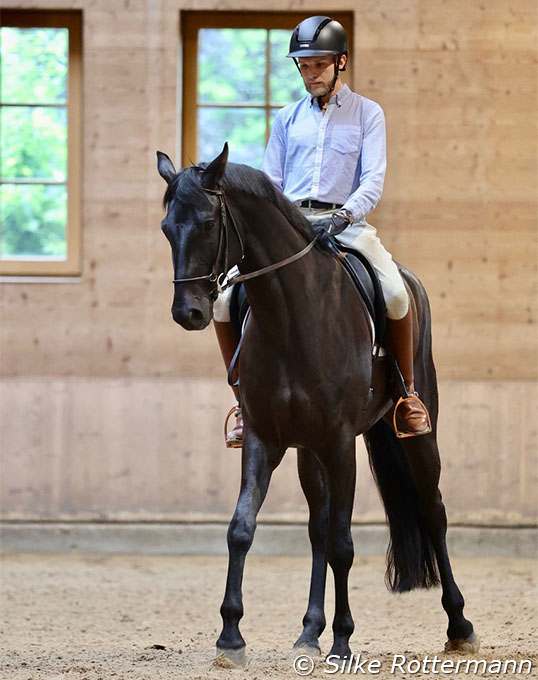
walk across the entire diagonal
and includes two walk pirouettes
around the front- and the hind-legs
To add two pirouettes, one around the hindquarters and one around the forehand, means the same muscle parts get alternately shortened and stretched so that this exercise is a suppling exercise par excellence. Additionally the pirouette around the hindquarters helps to lighten Fanti’s shoulders which have not much natural lift.
Generally the exercises in walk helped Fanti getting animated to chew the bit more.
Zig-zag of trot half-passes and leg-yielding
During this exercise Fanti had to change constantly between a few strides of trot half-pass in one, followed by a few strides of leg-yielding in the other direction.
To understand this exercise we need to know that while the half-pass is a lateral movement which requires bend and flexion in the direction the horse is moving in, leg-yielding is nothing than the lateral shifting of the horse with him being straight.
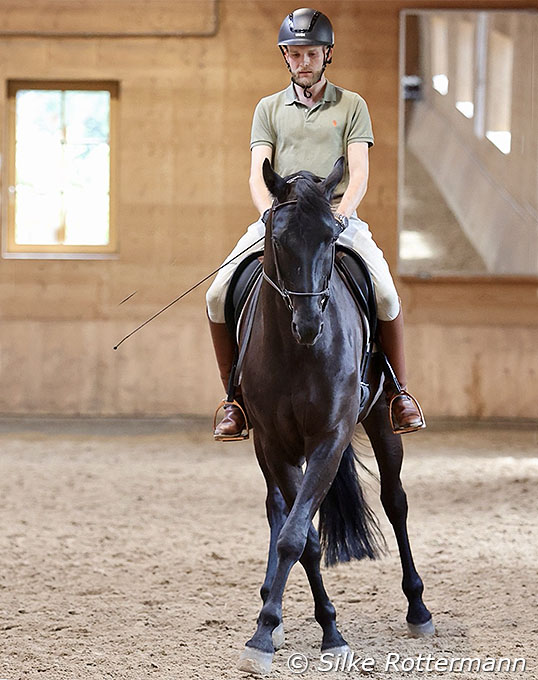
slightly flexed to the left,
but has no bend, he remains straight
During the trot half-pass a weight-shift towards the inner shoulder in shoulder-in position happens and then gets negated by the leg-yielding in the opposite direction.
The change from half-pass to leg yielding should be as smooth as possible. It means that the horse has to constantly change between being flexed and bent to being straightened. This schools the horse’s submissiveness and refines respective aids the rider applies In Fanti’s case it also particularly helped with his tendency to put more weight on the left shoulder..
My visit to Anja Beran has made it very clear to me again that training a horse is taking him as an individual and based on this assessment one has to cleverly apply classical exercises as gymnastics.
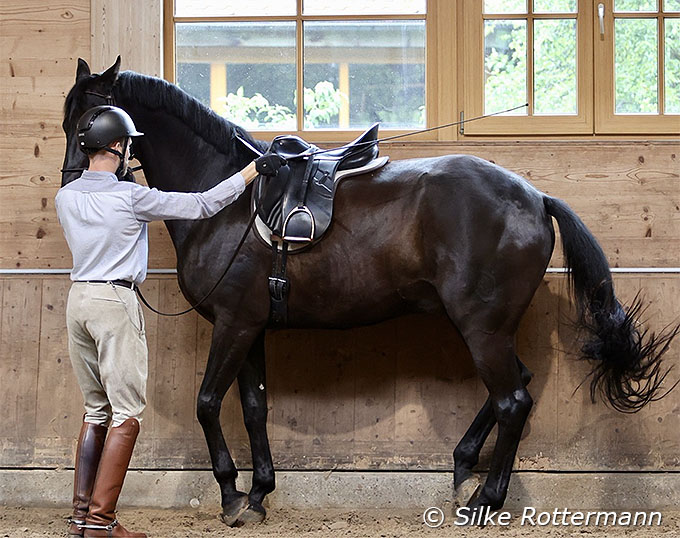
More push-off and lift will come
with more strength. He is calmer and
more confident than in spring
And last not least they allow horses who are more ordinary than the ones usually shown in higher level dressage competitions to keep up.
Related Links
Fanti's Progress - What Good Dressage Training Can Do to a Horse
Fanti's Progress Part II: "The Rider Must Control Himself Before He Can Control His Horse"
Fanti's Progress - Part III: "Taking a Step Up While Refining the Basics"
Fanti's Progress - Part IV: A Three-Day Training Stint with Anja Beran